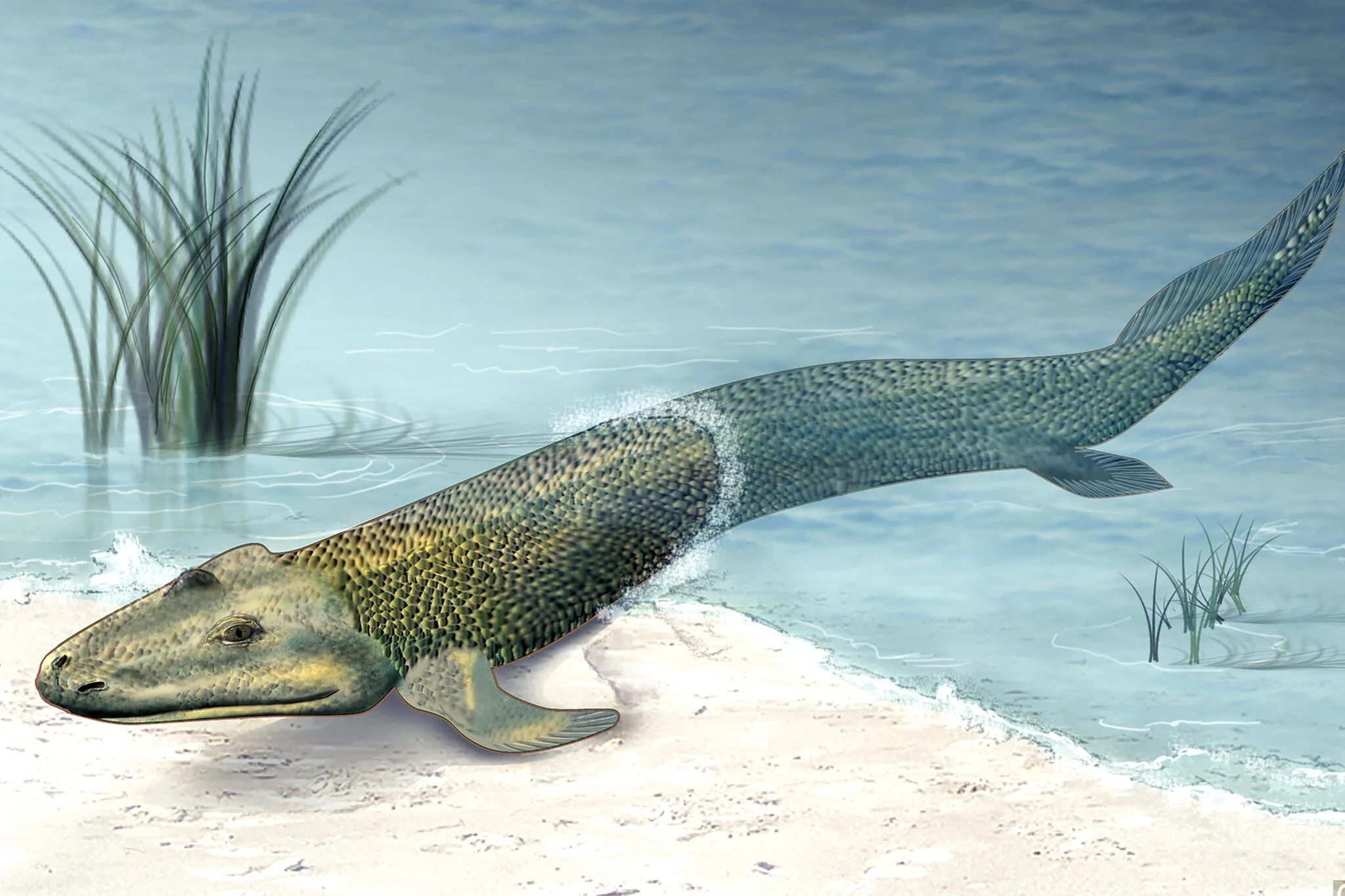An Evolutionary Theory for Tetrapods
By: Aaron Cao
The tetrapods (four-legged vertebrates) of today are living evidence of shared ancestry and evolution to older tetrapods such as the 375 million year old tiktaalik. In a nature lab, we can observe forelimbs from multiple species of animals including bats, dolphins, humans, and many more. The bat’s forelimb consists of the scapula, followed by the humerus, the radius, the ulna, the carpal, which then expand into 5 finger-like structures. These were the metacarpals. Then, finally, the phalanges on the end of each “finger”. The other animals like the dolphin and the human had forelimbs that also consisted of a pattern of one bone, two bones, many bones, then digits, but why is this? Because of Dr. Shubin’s team and their research, we have discovered that all of these animals share a common ancestor, the tiktaalik.
A drawing of a Tiktaalik
The tiktaalik was a fish-like mammal that was the first mammal to adapt to life on land. The tiktaalik’s forelimbs consisted of the bats’, dolphins’, and humans’ one bone, two bones, many bones, then digits pattern. Considering that the tiktaalik was a fish-like creature but was also adapting for life outside of the water, we can conclude that the tetrapods of today all came from a shared ancestor whether they are water based or land based. Because tetrapods have a shared ancestry, it means that different land and water tetrapods had to adapt to different environments and this evolved to survive.
Despite these changes, they still have shared ancestry meaning that newer tetrapods have the same bone structure as older tetrapods. The tiktaalik’s one bone, two bone, many bones, and digits forelimb structure matches up with the more modern tetrapods, suggesting that there is a shared ancestry between animals and that there was evolution that occurred in order for them to survive in different environments.
